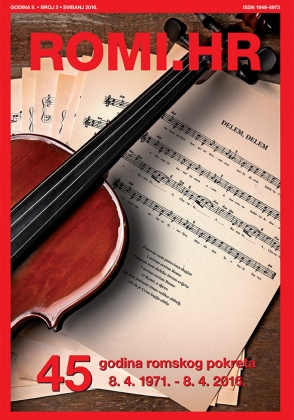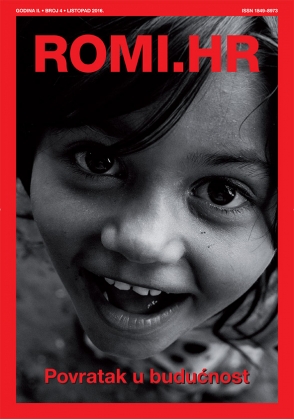Features ROMI.HR
/Tony Gatlif's „Gadjo Dilo“ („The Crazy Stranger“) explores the tension and connection between Roma and non-Roma in a Romanian village, offering a vivid portrayal of Roma culture and resilience.
Tony Gatlif, a Roma director who brings Roma life and art to the screen with a unique and natural style, was born in 1948 in Algeria, which was a French colony at the time. He had an Arab father and a Roma mother. Gatlif’s films often center on the Roma people and their lives. His works on this topic include several films, such as “Corre Gitano”, “Latcho Drom”, “Gadjo dilo”.
The 1997 film “Gadjo Dilo” (“The Crazy Stranger”) focuses on the relationship between Roma and non-Roma (referred to as "Gadjo"). Filmed in Crețulești, a village near Bucharest, Romania, the movie features local Roma residents. From the opening scenes, the tension between the two communities is evident. An elderly man named Izidor’s son has been imprisoned because of a non-Roma, and he cries out for justice for the Roma. His other son is gravely injured, and Izidor laments that hospitals aren’t for the Roma. Although this theme is not fully developed in the film, Gatlif subtly highlights issues faced by Roma, such as limited healthcare access.
The non-Roma character in the film is Stéphane, a young Frenchman who comes to the village in search of Nora Luca, a Roma singer whom his late father used to listen to on cassette. Izidor allows Stéphane to stay at his house, treating him as a replacement for his own son. Initially, the Roma community is suspicious of Stéphane, calling him a thief and warning that he will lead their women and girls astray. These reactions reflect the stereotypes often associated with Roma people. By making non-Roma the target of these prejudices, Gatlif illustrates how it feels for the Roma to be rejected by society.
In addition to depicting the Roma’s living conditions, the film highlights their wedding traditions, music, and dances. Gradually accepted by Rome, living in Roman-like tents and huts, as well as surprising the population with his inventions, Stéphane himself becomes an admirer of this unusual isolated world. Though he doesn’t find Nora Luca, Stéphane discovers something even more authentic and meaningful. Despite the language barrier, he and the Roma form a bond. The only Roma who speaks French is Sabina, a spirited and warm dancer who has returned to the village with her young child after separating from her husband in Belgium. From the beginning, there is a romantic connection between Sabina and Stéphane.
The celebration of Izidor’s son Adrian’s release from prison brings joy to the Roma community, but it is short-lived. Overcome by pride and revenge, Adrian commits a crime against the gadjo he holds responsible for his imprisonment. The resulting confrontation between the Roma and non-Roma leads to the village’s destruction and Adrian’s death.
Sabina’s mournful lament for her village and people encapsulates the centuries-long suffering of the Roma. This has a profound effect on Stéphane as well. He destroys the tapes of Roma music he recorded during his stay, symbolizing his belief that the gadjo have no right to hear or taint the purity of Roma music. In the final scene, he drinks vodka, sings, and dances by the burial site of these tapes, embracing the way the Roma express their grief through song and dance, a cultural practice he initially couldn’t understand.
In “Gadjo Dilo”, Tony Gatlif powerfully captures the resilience, depth, and struggles of Roma culture. Through Stéphane’s journey and his eventual immersion into Roma life, the film leaves a lasting impression of a people often misunderstood, resiliently clinging to their identity despite constant hardship and marginalization. The story serves as both a tribute to Roma traditions and a critique of the prejudice they face, ultimately honoring the spirit of a community that endures against all odds.
 Back to Features
Back to Features

.jpeg)











